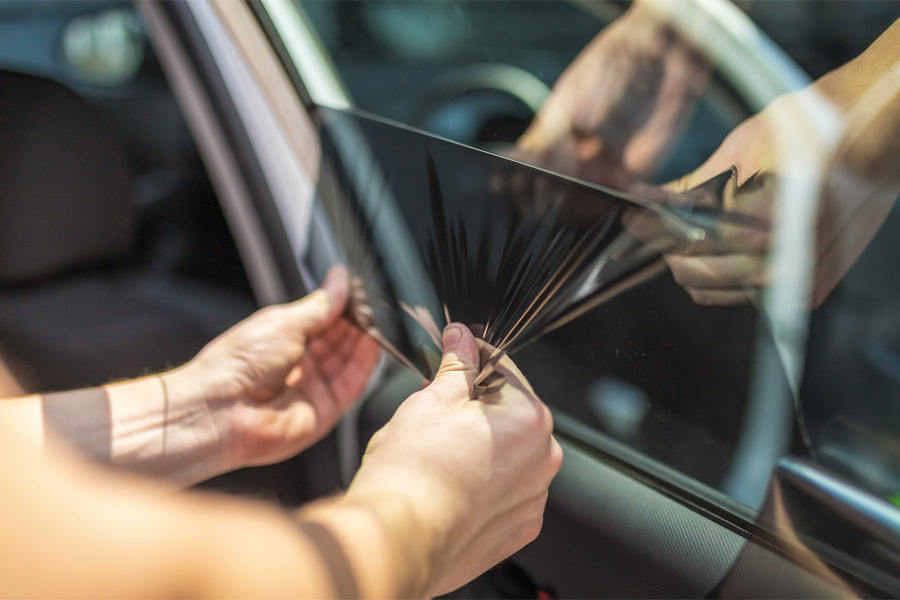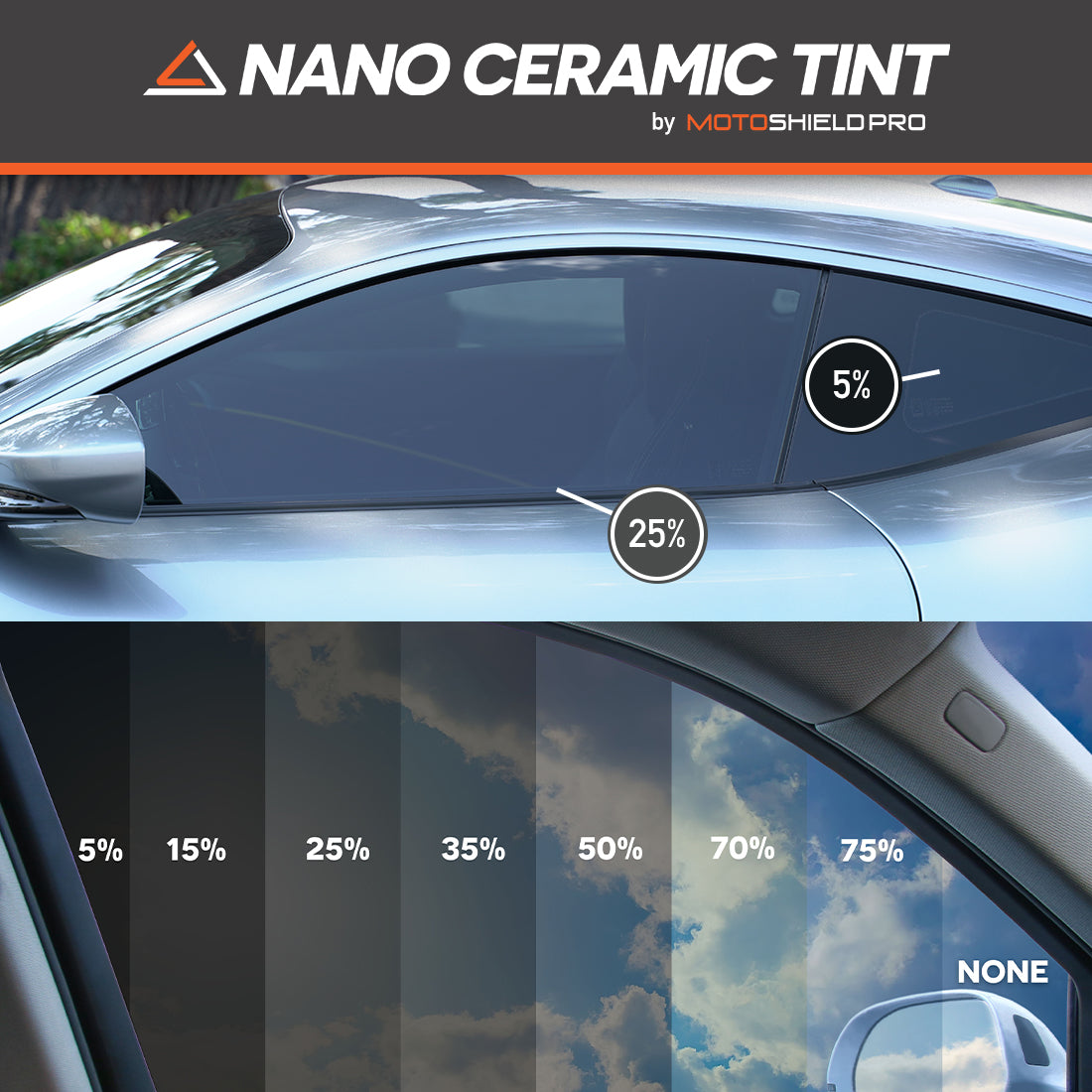Window Tinting Regulations and Guidelines: What You Need to Know Before Tinting Your Cars And Truck
Prior to proceeding with home window tinting for your car, it is necessary to familiarize on your own with the varied laws and standards that regulate this method throughout various states. These policies dictate the acceptable levels of color darkness, often determined by noticeable light transmission (VLT) percents, and include certain specifications for front windshields targeted at guaranteeing roadway safety and security. Furthermore, specific jurisdictions might provide medical exceptions for people with qualifying conditions. Recognizing these intricacies can conserve you from possible lawful ramifications, however what are the details regulations in your state?
Review of Window Tinting Rules
Window tinting regulations are regularly subject to variation throughout different jurisdictions, showing regional laws and safety considerations. These legislations dictate the allowable degrees of color darkness and reflectiveness on lorry home windows, ensuring that chauffeurs preserve appropriate presence while additionally protecting against damaging UV rays and warm.
The majority of policies classify window tinting based upon the Visible Light Transmission (VLT) percent, which suggests the quantity of light that can pass via the home window. Normally, lower VLT percents represent darker colors. Legislations often separate between the front, side, and rear home windows, with more stringent limitations applied to the front windscreen to improve safety and security for both the driver and various other roadway individuals.
Additionally, some territories impose limitations on the reflectivity of the tint, stopping excessive glare that can hinder visibility. Exemptions to these laws might exist for individuals with certain medical problems needing added sun protection. Compliance with window tinting laws is vital, as violations can lead to penalties, required removal of the color, and potential increases in insurance policy premiums. It is essential for automobile proprietors to acquaint themselves with local legislations before proceeding with home window tinting installations.
State-by-State Color Laws
Recognizing the specific home window tinting laws in each state is crucial for lorry owners seeking to comply with the regulation. Each state in the united state has actually established its very own collection of regulations governing window tinting, which can vary considerably. These policies frequently dictate the allowable levels of color darkness, the kinds of windows that can be tinted, and any kind of medical exceptions that may use.
For circumstances, states like The golden state have rigorous limitations on color darkness for front home windows, while others, such as New Mexico, might permit darker tints. Furthermore, particular states mandate specific exposure percentages for numerous windows, including the windshield, front side windows, and rear windows. It is essential for cars and truck proprietors to acquaint themselves with their state's legislations to stay clear of possible penalties or fines.
In addition, some states might need an accreditation sticker label to be put on colored windows, showing conformity with state legislations. Failure to stick to these guidelines not only risks legal consequences yet can also affect security and exposure while driving. Consequently, car owners must perform thorough research or consult neighborhood authorities to guarantee complete understanding and compliance with state-by-state tint regulations.
Allowed Color Degrees and Types
Several car proprietors might be amazed to discover that enabled tint degrees and kinds differ extensively across various states. Each state has actually established its own policies pertaining to the permitted darkness and reflectivity of home window tint, often gauged by Visible Light Transmission (VLT) percentages. VLT refers to the amount of light that can pass with the tinted windows; hence, a lower portion suggests a darker color.

Furthermore, the kinds of color products enabled can differ, with some states prohibiting mirror-like or metal surfaces. It is vital for automobile owners to familiarize themselves with their state's particular legislations to guarantee compliance. Non-compliance can lead to penalties, mandatory removal of the tint, or other lawful effects, making it critical to click reference comprehend these policies prior to waging installment.
Medical Exceptions for Tinting
While not all states provide allowances for medical exemptions relating to window tinting, those that do identify the necessity for particular individuals to improve visibility and convenience because of medical problems. Different medical problems, such as lupus, skin cancer cells, and particular eye problems, can provide individuals especially sensitive to sunlight. Consequently, these individuals might require darker colors to safeguard themselves from dangerous UV rays and glow.

It is very important to keep in mind that despite a medical exception, there may still be limitations on the degree of color enabled. Compliance with state regulations guarantees that people are both safeguarded and within legal restrictions. Those thinking about medical exemptions must call their local Department of Motor Vehicles or equivalent authority to comprehend the procedures and needs needed to get an exception effectively.
Fines for Non-Compliance
Failing to adhere to window tinting regulations can result in significant charges, which vary by state. Police are encouraged to issue citations for vehicles that do not follow the specified tinting laws. These charges generally consist of fines, which can range from moderate total up to several hundred bucks, depending on the seriousness of the infraction and the state concerned.
In some territories, repeated offenses may lead to rising fines or extra fines, such as compulsory court appearances. Non-compliance Get the facts may demand the elimination of prohibited tinting, often at the owner's expense. In severe situations, habitual offenders might encounter suspension of their vehicle enrollment until conformity is achieved.
Additionally, insurance policy effects might occur from receiving numerous citations for window tint offenses. Insurance companies might watch such violations as a sign of riskier habits, potentially causing raised costs or difficulty in insurance coverage.
To stay clear of these penalties, it is important for car owners to familiarize themselves with their local window tinting regulations and make certain that their car complies (Window Tinting). This proactive strategy not just avoids lawful ramifications yet likewise promotes road safety and security
Conclusion

The majority of laws categorize home window tinting based on the Visible Light Transmission (VLT) percent, which suggests the quantity of light that can pass via the window. Conformity with window tinting guidelines is important, as offenses can result in penalties, obligatory removal of the tint, and prospective boosts in insurance policy premiums.Recognizing the certain home window tinting laws in each state is important for automobile proprietors looking for to comply with the law. These guidelines often determine the allowable degrees of tint darkness, the kinds of home windows that can be tinted, and any kind of medical exemptions that may apply.
For instance, states like California have stringent restrictions on tint darkness for click for source front home windows, while others, such as New Mexico, may allow darker colors.